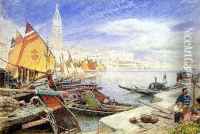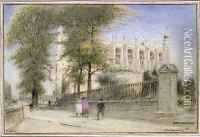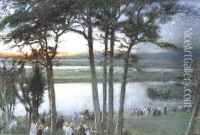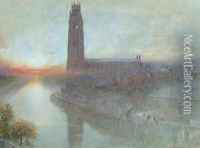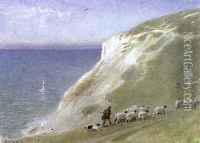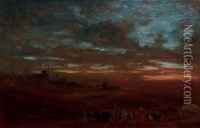Albert Goodwin Paintings
Albert Goodwin was a notable English landscape painter, born on February 17, 1845, in Maidstone, Kent. His artistic talent became apparent at an early age, leading him to apprentice under Arthur Hughes and Ford Madox Brown, who were both associated with the Pre-Raphaelite movement. This mentorship helped shape Goodwin's early artistic style, which was characterized by its vivid color and meticulous attention to detail, features that were hallmarks of the Pre-Raphaelite Brotherhood.
Goodwin's work often reflects his fascination with the natural world, as well as historical and mythological themes. His landscapes are particularly renowned for their atmospheric effects and dramatic use of light and shade, which convey a sense of the sublime and the spiritual within the natural environment.
Throughout his career, Albert Goodwin traveled extensively, finding inspiration in the varied landscapes of Europe, North Africa, and India. His travels not only influenced the subjects of his paintings but also contributed to the evolution of his style. Over time, he began to adopt a looser brushwork and a more impressionistic approach, which allowed him to capture the ephemeral qualities of light and atmosphere with greater spontaneity.
Goodwin was a prolific artist, creating over 800 works during his lifetime. His contributions to the art world were recognized in 1910 when he was elected as a member of the Royal Watercolour Society. He continued to paint and exhibit his work until his death on April 17, 1932.
Despite his death, Goodwin's legacy endures, and his works are held in high regard. They can be found in numerous public collections, including the Tate Gallery and the Victoria and Albert Museum in London. Goodwin's dedication to capturing the majesty of the natural world and his innovative approach to landscape painting have ensured his place among the respected British artists of the 19th and early 20th centuries.

